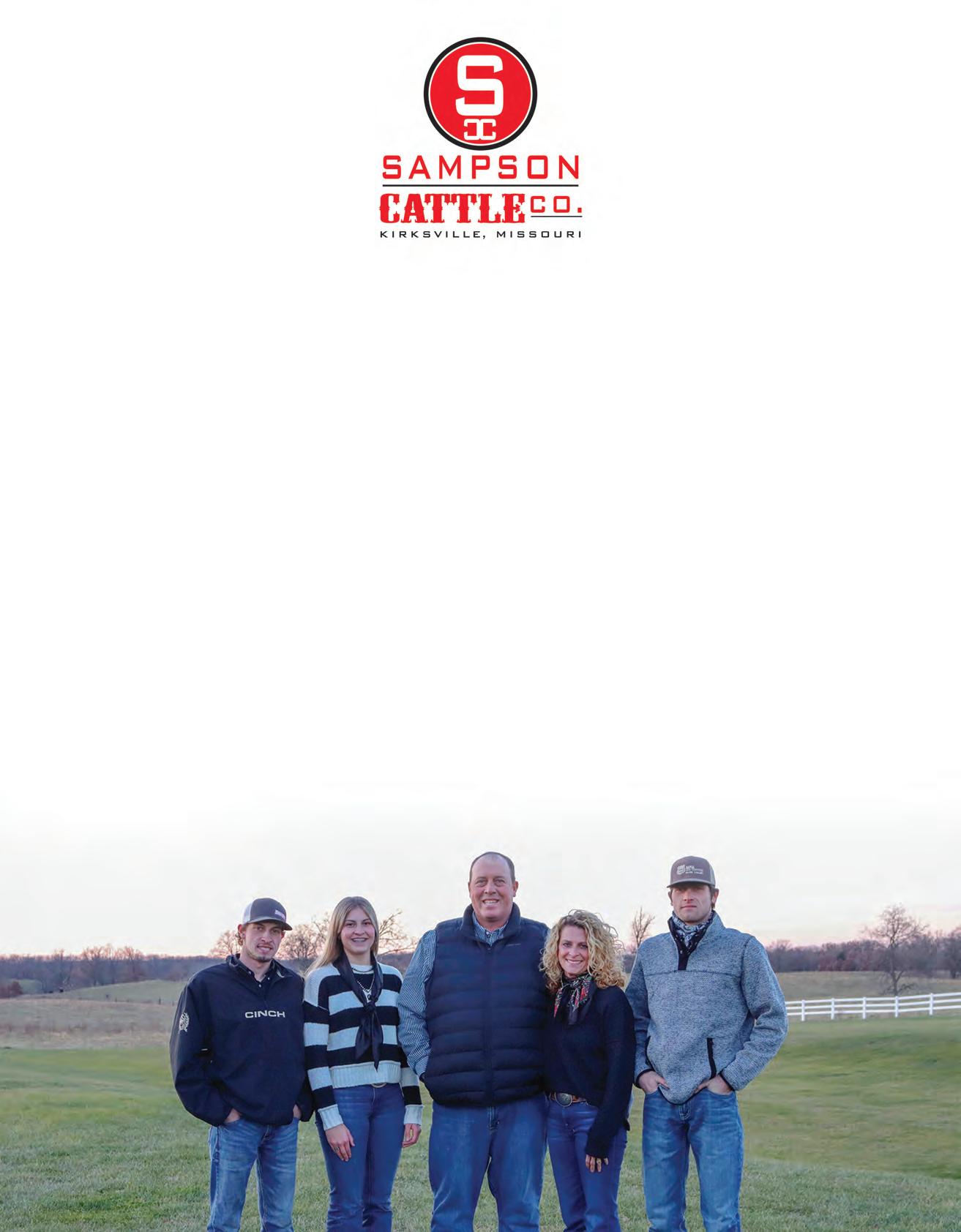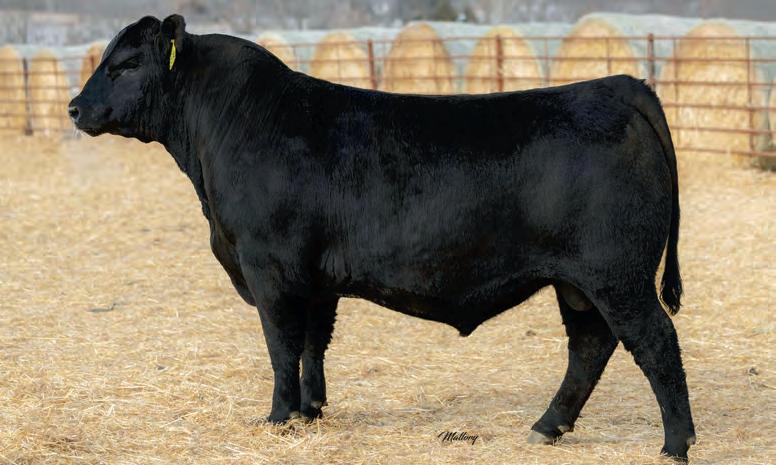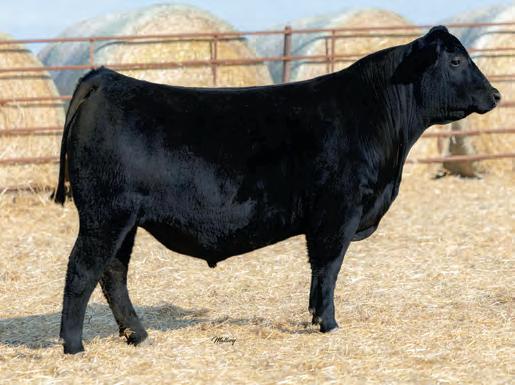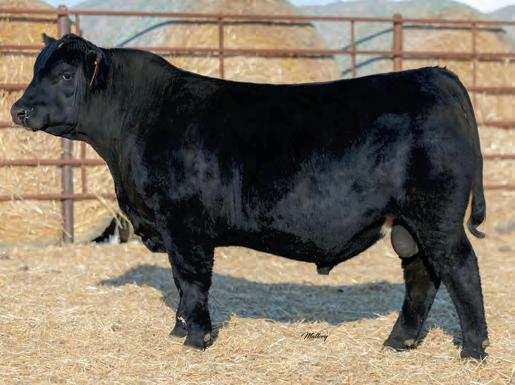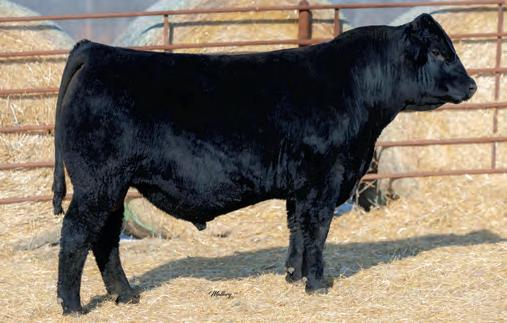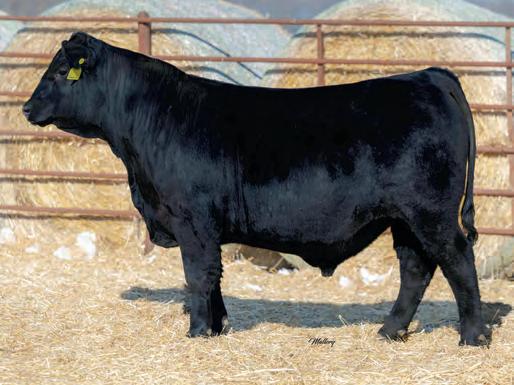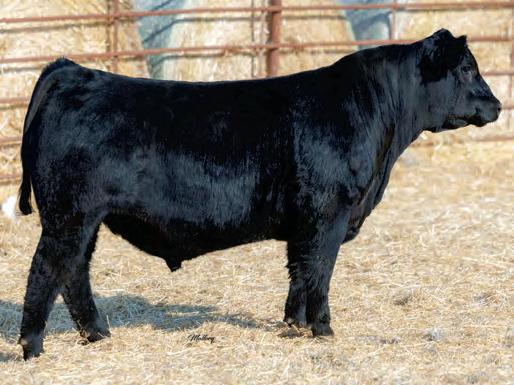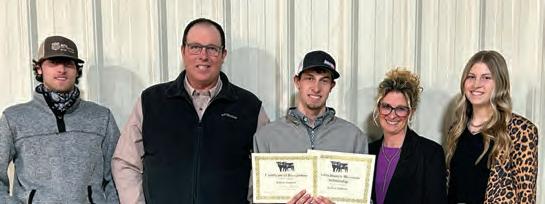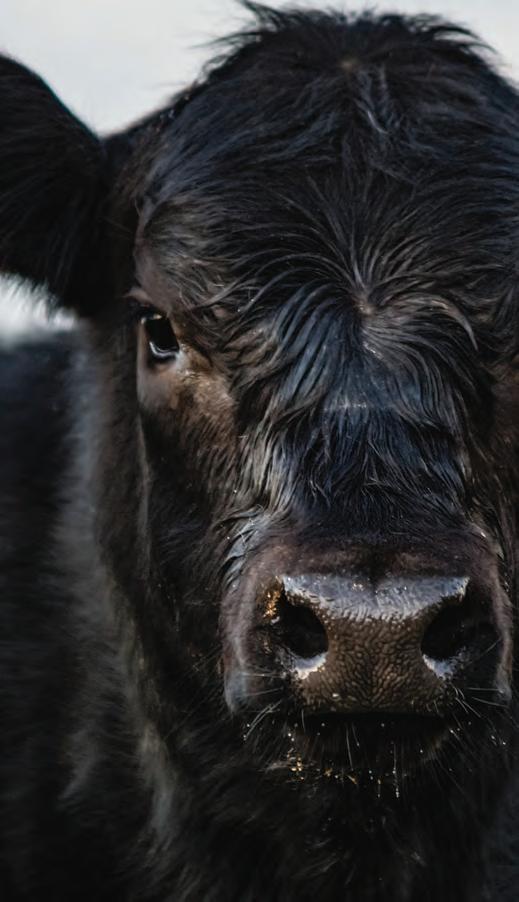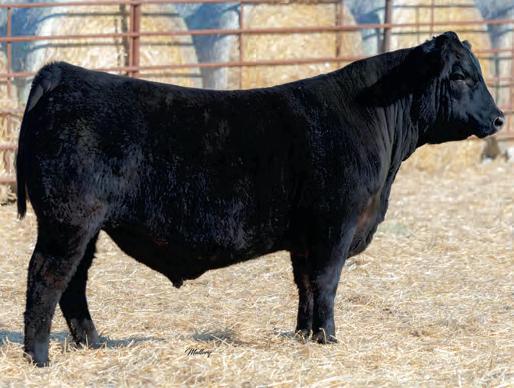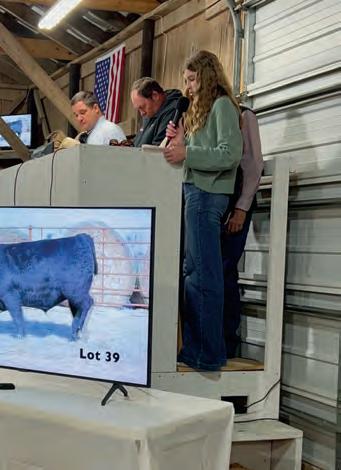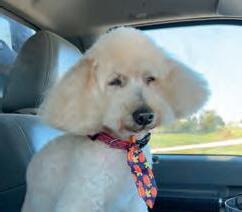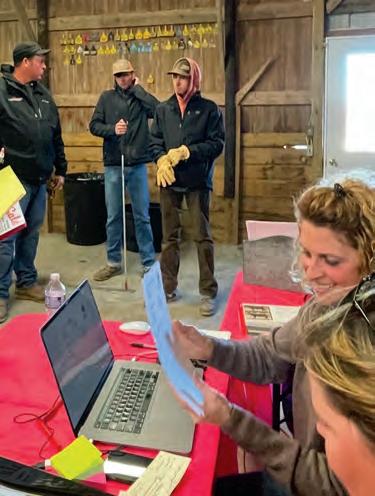WELCOME...We are excited to welcome you to our Bull Sale on Saturday March 8th. This year we will be offering Angus and SimAngus Bulls as well as open Commercial Yearling Heifers. Bulls and Heifers will be available for viewing by appointment and on Friday prior to the sale on Saturday. Be sure to check out our Facebook page (Sampson Cattle Co.) for pictures and videos. If we can be of any assistance, please don’t hesitate to call.
Chad, Mackenzie, Corbin, Kolton & Madelyn Sampson
SALE LOCATION: 24252 EAGLE TRAIL | KIRKSVILLE, MISSOURI
DIRECTIONS: From Kirksville go South on Business Hwy 63. Go 1 ½ miles past Days Inn turn west on Eagle Trail (Eagle Trail is the first gravel road past the Hwy 11 turn off). The farm is approximately ½ mile down Eagle Trail on the North side of the road. Watch for signs!
Bring your truck and trailer sale day and receive $100 per head OFF every BULL purchase if you haul your bull home sale day.
SALE DAY PHONES / SALES CONSULTANT
Chad Sampson……….660-216-1522
Mackenzie Sampson……….660-216-2207
Corbin Sampson……….660-216-0960
Layne Robinson………..573-544-7024
AUCTIONEER
Jerry Lehmann…..573-999-4759
RINGMEN
Austin Brandt | Kyle Lynn
COMPLIMENTARY LUNCH will be served on sale day.
The entire sale will be conducted with a video of the cattle playing during the sale and the cattle will be on display outside the sale barn.
SUPPLEMENTAL INFORMATION
A supplement sheet will be available sale day with any updated information. Announcements from the auction block take precedence over sale book information.
FIRST BREEDING SEASON GUARANTEE
All of the bulls selling have passed a BSE prior to the sale. The First Breeding Season is defined as the time period from first turnout through the next 90 days. At any point during this Breeding Season your bull is injured in a way as to make him unable to service a cow Sampson Cattle Co. will issue credit to be used in the next sale less the salvage value. Salvage value will be based off of a minimum of $2000. We ask that you notify us immediately at the time of the injury so all options can be discussed. All claims must be made by September 1, 2025. This is not a Life Insurance Policy, if you want to purchase a Mortality Insurance Policy on your purchases you may do so at the sale.
OWNERSHIP
Cattle are the property of the buyer as soon as they are sold, with buyer taking complete risk. Insurance will be available to purchase at the sale.
FEED OPTION
All bulls that remain on the farm after the sale will be fed and cared for free charge until the end of April. After May 1, 2025 the charge of $3.00 per day to cover feed cost will be applied to bulls that have not been picked up. It is suggested that for those customers who choose this option that they purchase mortality insurance that will be available sale day on these bulls.
TRUCKING
Free delivery within 100 miles of Sampson Cattle Co. Shipment is at buyer’s risk.
HERD HEALTH
All cattle will be accompanied by proper health certificates for shipment and have a complete vaccination program.
TERMS AND CONDITIONS
Cattle will sell under the suggested Terms and Conditions of the American Angus Association (http://www.angus.org/Pub/suggested_sale_terms.pdf). All cattle will be paid for before transportation arrangements are made.
LIABILITY
All persons who attend this sale do so at their own risk, legal or otherwise, for their safety or for the behavior of the animals. The owners and the sale staff assume no liability for property loss of any accident that may occur.
RETAINED SEMEN INTEREST
Sampson Cattle Co. will retain 1/3 semen interest in all of the bulls selling in this offering unless otherwise noted. The Buyer receives full possession and 100% salvage value.
Buyers unable to attend the sale may contact any of the sale staff or owners and leave their bid.
Real-time bidding via the internet for this sale. Live audio and live video will allow buyers to bid on animals just as if they were present at the sale. Buyers must create an account and request a buyer number. Instructions are available to walk you through the account set-up process.
Web address: www.liveauctions.tv.
Contact Mariah Miller (712) 294-4731 or mariah@liveauctions.tv.
** Photos and Video taken by Mallory Robinson | 660-525-5717
What ’s a bull worth?
Cowman Formula
Increase in pounds per calf from a top -performance bull
X No. of cows bred to him per year
X No. of years to keep the bull
X Expected selling price of calves
= Additional dollars you can pay for a better bull
Example: A bull who will add 30 lbs. to the weaning weight of each of his calves mated to 25 cows per year for 4 years and you sell the calves for $1.50 per pound.
30 x 25 = 750 x 4 = 3000 x 1.50 = $4,500
This bull is worth $4,500 more than the average bull who will keep your weaning weights the same. Take this formula and put your own gures in and see what you
Sampson Wildcat
Lot 10 Sampson Exponential
If you see this logo in conjunction with an individual animal or group of animals, you know that that animal is registered with the American Angus Association and backed by the power of data , programs and pedigrees of the Association.
Invest wisely in those that carry the Powered By Angus logo.
Sampson War Paint L343
Sampson Cowboy Logic L342
D.O.B. 08/28/2023 Bull • 4463987 Tattoo: L342
CCR Cowboy Cut 5048Z
SFG Cowboy Logic D627
SFG Queen B01 Connealy Worthman 75B
Gerloff Enchantress B162Z GFZ Enchantress 4198
We would like to thank all of our buyers, bidders and supporters of our annual sale we couldn’t do it without you!
AMERICAN ANGUS ASSOCIATION SELECTION TOOLS
Expected Progeny Difference (EPD), is the prediction of how future progeny of each animal are expected to perform relative to the progeny of other animals listed in the database. EPDs are expressed in units of measure for the trait, plus or minus. Interim EPDs may appear on young animals when their performance has yet to be incorporated into the American Angus Association National Cattle Evaluation (NCE) procedures. This EPD will be preceded by an “I”, and may or may not include the animal’s own performance record for a particular trait, depending on its availability, appropriate contemporary grouping, or data edits needed for NCE.
Accuracy (ACC), is the reliability that can be placed on the EPD. Accuracy will range from 0 to 1 with an accuracy closer to 1.0 indicating higher reliability. Accuracy is impacted by the amount of information that is included in the analysis including individual genotype and performance records as well as number of progeny and ancestral records.
PRODUCTION
Calving Ease Direct (CED), expressed as a difference in percentage of unassisted births, with a higher value indicating greater calving ease in first-calf heifers. It predicts the average difference in ease with which a sire’s calves will be born when he is bred to first-calf heifers.
Birth Weight (BW), expressed in pounds, is a predictor of a sire’s ability to transmit birth weight to his progeny compared to that of other sires.
Weaning Weight (WW), expressed in pounds, is a predictor of a sire’s ability to transmit weaning growth to his progeny compared to that of other sires.
Yearling Weight (YW), expressed in pounds, is a predictor of a sire’s ability to transmit yearling growth to his progeny compared to that of other sires.
Residual Average Daily Gain (RADG), feed efficiency expressed in pounds per day, is a predictor of a sire’s genetic ability for post-weaning gain in future progeny compared to that of other sires, given a constant amount of feed consumed.
Dry Matter Intake (DMI), expressed in pounds per day, is a predictor of difference in transmitting ability for feed intake during the post-weaning phase, compared to that of other sires.
Yearling Height (YH), expressed in inches, is a predictor of a sire’s ability to transmit yearling height compared to that of other sires.
Scrotal Circumference (SC), expressed in centimeters, is a predictor of the difference in transmitting scrotal size compared to that of other sires.
MANAGEMENT
Claw Set (Claw), expressed in units of claw-set score, a lower EPD is more favorable, indicating a sire will produce progeny with more symmetrical, even and appropriately spaced toes compared to another sire.
Foot Angle (Angle), expressed in units of foot-angle score, a lower EPD is more favorable, indicating a sire will produce progeny with an angle closer to 45 degrees at the pastern and appropriate toe length and heel depth compared to another sire.
Docility (DOC), expressed as a difference in yearling cattle temperament, with a higher value indicating more favorable docility in a sire’s offspring compared to another sire.
Pulmonary Arterial Pressure EPD (PAP), expressed in millimeters of Mercury (mmHg), with a lower EPD being more favorable indicating a sire should produce progeny with a lower PAP score to decrease the risk of progeny contracting high altitude disease most commonly experienced at 5,500 ft or greater in elevation.
Hair Shed EPD (HS), expressed in units of hair shed score, with a lower EPD being more favorable. This indicates a sire should produce progeny who shed their winter coat earlier in the spring and has improved environmental adaptability in heat stressed areas and grazing endophyte-infected (hot) fescue.
MATERNAL
Heifer Pregnancy (HP), is a selection tool to increase the probability or chance of a sire’s daughters becoming pregnant as first–calf heifers during a normal breeding season. A higher EPD is the more favorable direction, and the EPD is reported in percentage units.
Calving Ease Maternal (CEM), expressed as a difference in percentage of unassisted births, with a higher value indicating greater calving ease in first-calf daughters. It predicts the average ease with which a sire’s daughters will calve as first-calf heifers when compared to daughters of other sires.
Maternal Milk (Milk), expressed in pounds of calf weaned, is a predictor of a sire’s genetic merit for milk and mothering ability in his daughters. In other words, it is the part of the calf’s weaning weight attributes to milk and mothering ability.
Mature Weight (MW), expressed in pounds, is a predictor of the difference in mature weight of daughters of a sire compared to the daughters of other sires.
Mature Height (MH), expressed in inches, is a predictor of the difference in mature height of a sire’s daughters compared to daughters of other sires.
CARCASS
Carcass Weight (CW), expressed in pounds, is a predictor of the differences in hot carcass weight of a sire’s progeny compared to progeny of other sires.
Marbling (Marb), expressed as a fraction of the difference in USDA marbling score of a sire’s progeny compared to progeny of other sires.
Ribeye Area (RE), expressed in square inches, is a predictor of the difference in ribeye area of a sire’s progeny compared to progeny of other sires.
Fat Thickness EPD (Fat), expressed in inches, is a predictor of the differences in external fat thickness at the 12th rib (as measured between the 12th and 13th ribs) of a sire’s progeny compared to progeny of other sires.
$VALUE INDEXES
$Value Indexes, expressed in dollars per head, are multi-trait selection indexes where a higher value suggests more profit. The $Value is an estimate of how future progeny of each sire are expected to perform, on average, compared to progeny of other sires if sires were randomly mated to cows and if calves were exposed to the same environment.
Maternal Weaned Calf Value ($M), expressed in dollars per head, predicts profitability differences in progeny due to genetics from conception to weaning by decreasing mature cow size and improving docility, foot structure and fertility while maintaining weaning weights consistent with today’s production.
Weaned Calf Value ($W), expressed in dollars per head, provides the expected difference in future progeny pre-weaning performance from birth to weaning.
Energy Value ($EN), expressed in dollar savings per cow per year with a larger value being more favorable. It assesses differences in cow energy requirements, due to maternal milk and mature cow size.
Feedlot Value ($F), expressed in dollars per head, is the expected average difference in future progeny performance for post-weaning feedlot merit (growth and feed efficiency) compared to progeny of other sires assuming producers retain ownership of cattle through the feedlot phase and sell on a carcass-weight basis.
Grid Value ($G), expressed in dollars per carcass, is the expected average difference in future progeny performance for carcass grid merit, including quality and yield grade attributes, compared to progeny of other sires.
Beef Value ($B), expressed in dollars per carcass, represents the expected average differences in the progeny post-weaning performance and carcass value compared to progeny of other sires. This index assumes commercial producers wean all male and female progeny, retain ownership of these animals through the feedlot and sell on a carcass merit grid.
Combined Value ($C), expressed in dollars per head, which includes all traits that make up both Maternal Weaned Calf Value ($M) and Beef Value ($B) with the objective that commercial producers will replace 20% of their breeding females per year with replacement heifers retained within their own herd. The remaining cull heifer and steer progeny are then assumed to be sent to the feedlot where the producers retain ownership of those cattle and sell them on a quality-based carcass merit grid.

